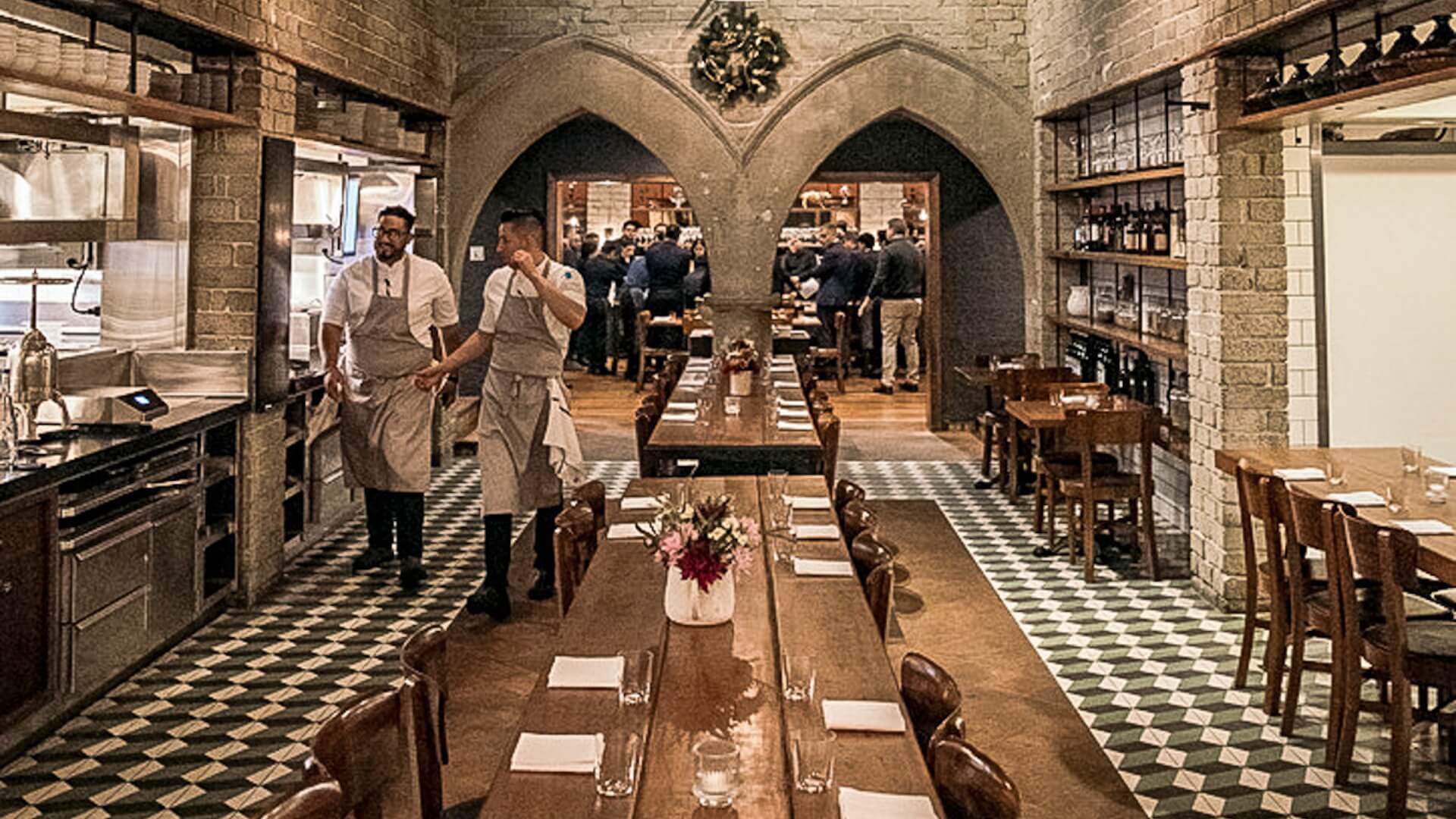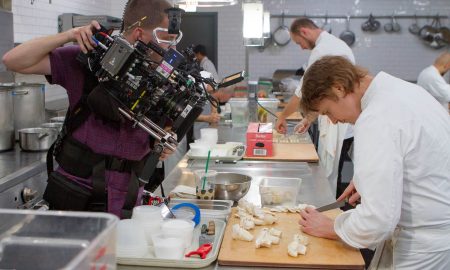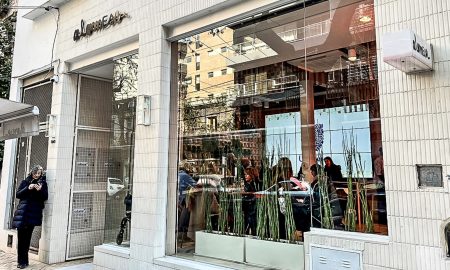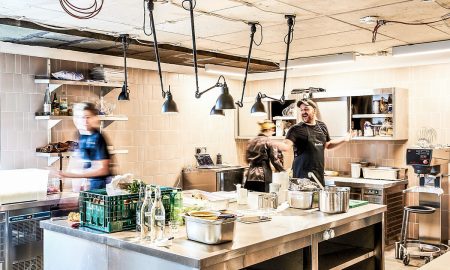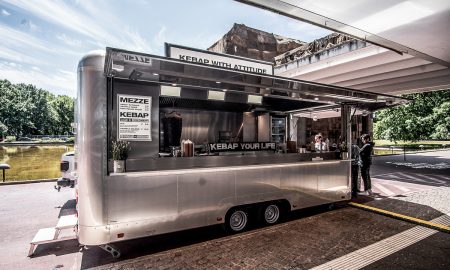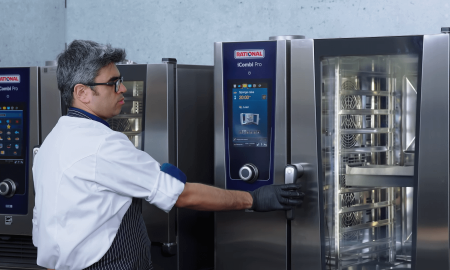Enjoyment means taking the time to consciously perceive and take things in. However, it becomes even more enjoyable when we can share this moment with others instead of experiencing it alone. As the saying goes, happiness is the only thing that multiplies when you share it. Probably the most visionary chef of our time – Ferran Adria – builds on this when he says, “The biggest social network in the world is food, not Facebook.”
Sharing tables: global ideas and concepts
In this way, gastronomy has understood that a communal experience does not necessarily have to be shared with people we know. After all, shared tables that you share with other guests you don’t know in restaurants, bars, etc. have been trending around the world at least since the end of the pandemic, when we were particularly longing for company.

Image: m-eating table
Fine dining as a communal experience
This trend is embraced by Brut in the Mallorcan municipality of Llubí. Argentinian chef Edu Martínez has opted for an unconventional setting in addition to the shared table concept. In this fine dining restaurant, you can only take a seat at the bar. Brut has 16 seats available – and you can’t always choose who will be sitting next to you. Where intimate conversations may not be as easy to have as they are elsewhere. And seats where the culinary experience is no longer a private affair, but rather one an experience you share with others. They also share a peek at how the food is prepared. This is because the open kitchen is located directly behind the bar, giving you the best view of the cooking creations on offer. In this way, a visit to the restaurant becomes a holistic community event. To match this, as well as the bar ambiance, 12 home-brewed beers are on offer at Brut.
With Chef’s Table At Brooklyn Fare, a New York fine dining restaurant is also opting for a shared table in the form of a bar. Unlike Brut, there are a few stand-alone tables in the restaurant; however, the real action takes place at the huge bar. The restaurant only celebrated its reopening in October 2023 after having to close its doors the previous summer due to in-house disputes. The original concept of a shared bar, which also offers a view of the open kitchen, was preserved by the Austrian Max Natmessnig and Dutchman Marco Prins. Nearly twenty guests share both the seats at the bar and the culinary pleasure.
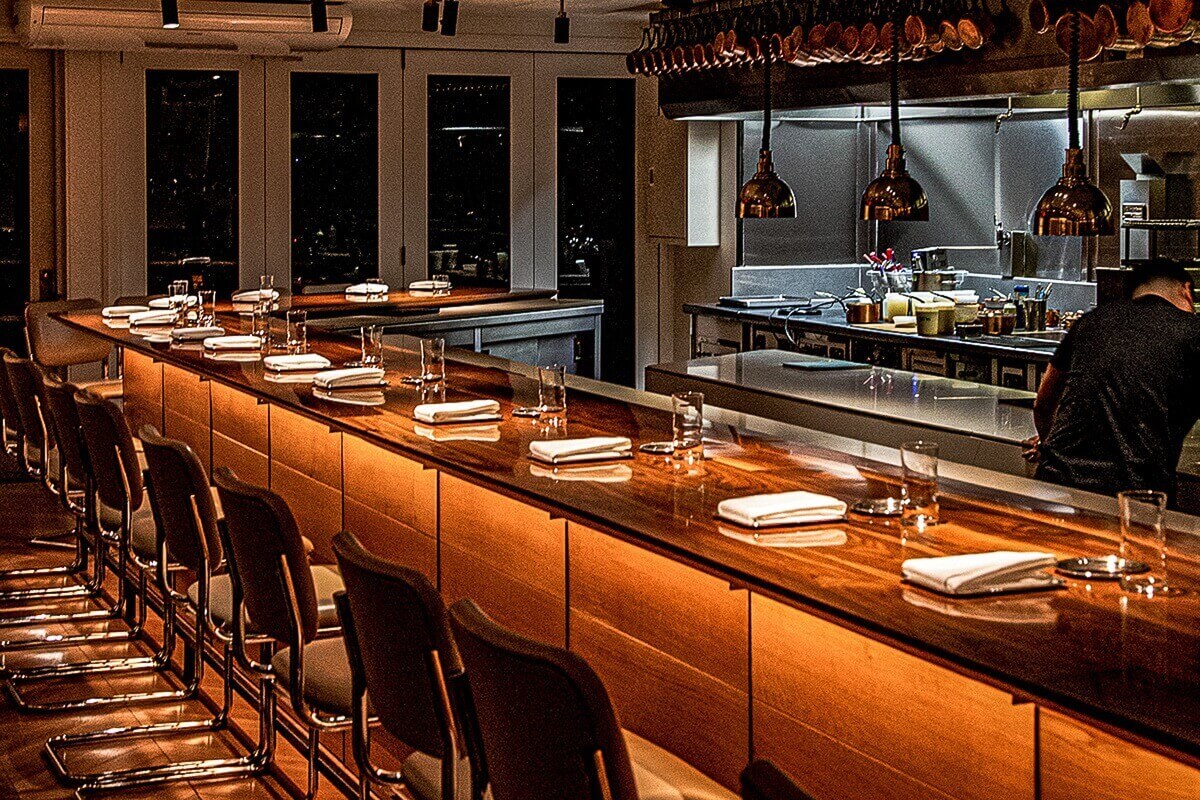
Image: Chefs Table at Brooklyn Fare
Shared coffee table
On the US West Coast, Walter and Margarita Manzke have put their community table concept into practice. The République is located in a historic brick building built in 1928 by none other than Charlie Chaplin. A café with long, woodenshared tables, its ambiance is more reminiscent of a medieval knight’s hall than a typical coffee house. The Manzke husband-and-wife duo boast a rich background in fine dining – from Ferran Adria’s El Bulli on the Costa Brava to Alain Ducasse’s Louis XV in Monaco. With République, they have created a truly trendy location that has two concepts: While dinner is served at the private table in the adjoining restaurant, during the day the café is self-serve; guests then sit down at one of the shared tables. There is no fear of contact here. The coffee house concept is very popular, with guests often waiting in long lines, especially for breakfast.
However, m-eating table proves that the shared tables concept is not just a hip trend for eccentric or extravagant high earners. In fact, it also has a social element to it. Launched in Switzerland, the project has participating restaurants set up a large table, which is labeled as a “m-eating table” to indicate it’s a shared table. Guests are then asked whether they would like to sit at this communal table or would prefer to sit separately. There are many reasons for eating in the company of others. Some people simply don’t want to sit alone in the restaurant, others enjoy the opportunity to network and others even make new friends here. It’s success speaks for the concept: More than twenty restaurants in over ten cities in Switzerland are already on the m-eating table list.
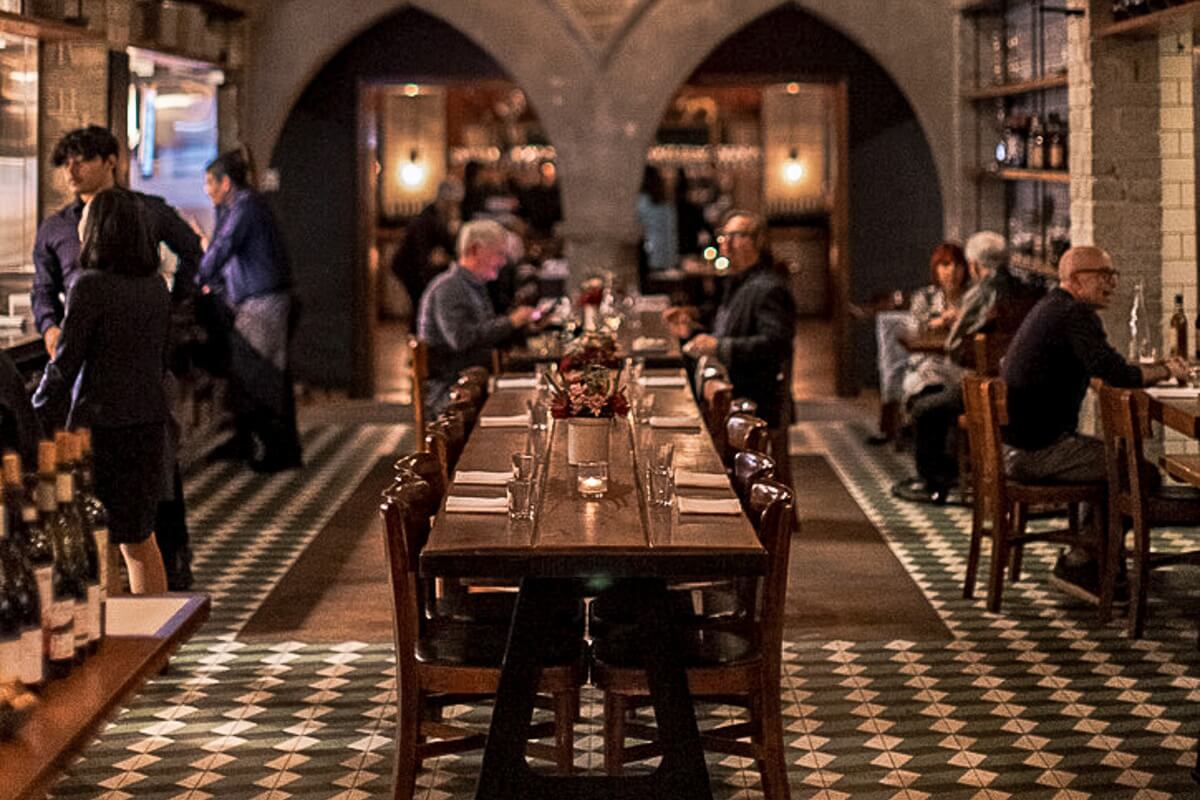
Image: Catherine Dzilenski
Sharing is in
When it comes to culinary delights outside of fine dining, it quickly becomes clear that shared tables are in fact nothing new. In fast food restaurants, party tents, food courts or beer gardens, shared tables have long been an accepted reality. People are also sharing with others beyond the world of gastronomy: for example, carsharing or private apartment rentals.
What is new, however, is that people are consciously embracing sharing as a communal experience and therefore actively seeking it out. As German trend researcher Pierre Nierhaus explains in his Gastro Trend Report 2022/23, the need for togetherness, connections and relationships “…is primal. People have always met up with family, friends and guests to share a meal. That has remained true to this day.” According to Nierhaus, food and drink are the “glue of society.”

Image: Martin Joppen
Benefits of communal tables
Especially after the numerous lockdowns, contact restrictions and social isolation caused by the coronavirus pandemic, people were virtually starving for contact and longing to get together and interact with others. Restaurant owners also benefit from shared tables – especially in volatile times like these. They increase the seating capacity; long tables or even a bar used for eating do not need any spaces in between that staff would otherwise have to navigate. Larger groups of guests can also be accommodated more easily than before without having to make any changes. The fact that waiting times in restaurants with shared tables tend to be shorter than in those without this concept is probably also delighting guests. A shared win, so to speak.


